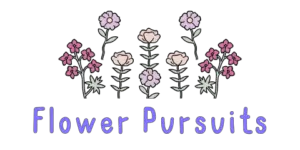Yes, you can plant iris and daffodils together in the same garden bed. Both plants have similar sunlight and soil requirements, making them compatible garden companions. Iris plants typically bloom earlier in the spring, before daffodils, creating a beautiful and colorful display in your garden. Just make sure to plant them at the appropriate depth and spacing to allow each plant to thrive.
Dream of a garden filled with vibrant colors?
Picture irises elegantly paired with daffodils.
Join me in exploring how to create a stunning garden sanctuary.
Learn about their needs and design tips for the perfect combination.
Let’s elevate your gardening game with iris and daffodils!
Let’s start!
Table of Contents
Understanding the Growing Needs of Iris and Daffodils
When it comes to planting iris and daffodils together, understanding the unique growing needs of each flower is essential to ensure a harmonious and thriving garden.
Let’s delve into the specifics of what these beautiful flowers require:
Sunlight Requirements
Both iris and daffodils thrive in full sunlight, needing at least 6-8 hours of direct sunlight per day to bloom to their full potential.
However, daffodils can tolerate partial shade better than irises, making them a versatile choice for areas with varying light conditions.
Soil Conditions
Iris plants prefer well-draining soil rich in organic matter.
They don’t like their roots to sit in water, so ensuring good drainage is crucial for their growth.
On the other hand, daffodils are more forgiving when it comes to soil conditions, thriving in moderately fertile soil with good drainage.
Planting Depth
When planting iris bulbs and daffodil bulbs together, it’s important to consider the correct planting depth.
Iris bulbs should be planted just beneath the soil surface, while daffodil bulbs need to be planted at a depth that is two to three times the height of the bulb.
Watering Needs
Both iris and daffodils benefit from regular watering, especially during their growing season.
However, it’s important not to overwater as it can lead to root rot.
Allow the soil to dry out slightly between waterings to promote healthy growth for both flower varieties.
Bloom Times
One of the key considerations when planting iris and daffodils together is their bloom times.
Daffodils typically bloom early in the spring, while irises bloom later in the season.
By strategically planting these flowers together, you can enjoy a prolonged flowering period in your garden, creating a visually stunning display.
Companion Planting Benefits
Planting iris and daffodils together can offer mutual benefits to both flowers.
Daffodils have a natural pest deterrent effect due to their toxic bulbs, which can help protect irises from pests and diseases.
Additionally, the contrasting colors and textures of these flowers can create visually appealing garden landscapes.
By understanding and catering to the specific growing needs of iris and daffodils, you can create a beautiful and thriving garden bed that showcases the unique characteristics of these gorgeous flowers.
With the right care and attention, your iris and daffodil companionship can flourish and enhance the overall aesthetic of your outdoor space.
Complementing Blooming Periods – Extending the Beauty in Your Garden
When it comes to planting iris and daffodils together, one of the key considerations to keep in mind is how their blooming periods complement each other.
By strategically choosing flowers with staggered blooming times, you can ensure a continuous display of color in your garden throughout the seasons.
Understanding Bloom Times
Iris flowers typically bloom in late spring to early summer, while daffodils bloom in early spring.
This makes them an ideal pairing, as the daffodils will start the show early in the season, followed by the irises, creating a seamless transition of color and beauty in your garden.
Extending the Flower Show
By planting iris and daffodils together, you can extend the blooming period in your garden and enjoy vibrant blooms for a longer duration.
As the daffodils fade away, the irises will start to bloom, ensuring that there is always something eye-catching and colorful to admire in your outdoor space.
Practical Tips for Planting
When planting iris and daffodils together, consider the following tips to make the most out of this complementary combination:
1.
Plant in Groups: Create clusters of iris and daffodil bulbs together to maximize the visual impact of their blooms.
2.
Choose Varieties Wisely: Select iris and daffodil varieties that have similar sunlight and soil requirements for optimal growth.
3.
Layer Bulbs: Plant daffodil bulbs deeper in the soil than iris bulbs to prevent overcrowding and allow each flower to thrive.
Expert Insights
According to a study by the Royal Horticultural Society, pairing flowers with complementary blooming periods not only enhances the visual appeal of your garden but also attracts a wider range of pollinators, contributing to a healthier ecosystem.
the strategic combination of iris and daffodils in your garden can create a harmonious display of colors that lasts throughout the blooming seasons.
By understanding their bloom times and following practical planting tips, you can elevate the beauty of your outdoor space and enjoy a stunning floral showcase.
So, are you ready to transform your garden into a colorful paradise with the magical duo of iris and daffodils?
Stay tuned for more expert tips and insights to take your gardening skills to the next level!
Creating the Perfect Environment – Tips for Planting Iris and Daffodils Together
Are you wondering if you can plant iris and daffodils together in your garden for a stunning floral display?
Well, you’re in the right place!
Let’s dive into creating the perfect environment to ensure these beautiful flowers thrive harmoniously side by side.
Proper Plant Selection
When planting iris and daffodils together, it’s crucial to select the right varieties that not only complement each other visually but also have similar growing requirements.
Opt for iris varieties that prefer full sun and well-drained soil, such as Bearded Iris, Japanese Iris, or Siberian Iris.
Pair them with daffodil varieties like Dutch Master, Ice Follies, or Tete-a-Tete, which also thrive in full sun and well-drained soil.
Timing Is Key
To establish a successful bloom cycle for both iris and daffodils, timing is key.
Plant your bulbs in the fall before the first frost to allow them to establish their root systems before winter sets in.
Iris typically bloom in late spring to early summer, while daffodils bloom earlier in the spring.
By staggering the planting times, you can enjoy a continuous display of vibrant colors throughout the spring season.
Soil Preparation
Both iris and daffodils prefer well-drained soil to prevent waterlogging and root rot.
Before planting your bulbs, ensure the soil is loose and crumbly to promote healthy root growth.
Incorporate organic matter like compost or peat moss to improve soil structure and provide essential nutrients for your flowers.
A soil pH level between 6.0 and 7.0 is ideal for both iris and daffodils to thrive.
Spacing and Depth
When planting iris and daffodils together, proper spacing and planting depth are essential for optimal growth.
Iris rhizomes should be planted just below the soil surface, allowing them to receive ample sunlight.
Daffodil bulbs, on the other hand, should be planted at a depth equal to three times their diameter.
Maintain a distance of 6-8 inches between each bulb or rhizome to prevent overcrowding and allow for healthy air circulation.
Mulching and Maintenance
Mulching is a key practice to conserve soil moisture, suppress weed growth, and regulate soil temperature for your iris and daffodils.
Apply a 2-3 inch layer of organic mulch around the base of the plants, taking care not to cover the emerging shoots.
In the spring, remove any dead foliage or spent flowers to promote new growth and prevent disease.
Companion Planting Benefits
Planting iris and daffodils together not only creates a visually appealing garden display but also offers practical benefits.
Daffodils are known for their pest-repelling properties, deterring rodents, deer, and other garden pests.
By interplanting them with iris, you can help protect your delicate iris blooms from potential damage.
by following these tips for creating the perfect environment for planting iris and daffodils together, you can enjoy a vibrant and colorful garden display that blooms year after year.
So why not add a touch of elegance and charm to your outdoor space with this stunning floral combination?
Happy planting!
Remember, when it comes to gardening, a little planning and care go a long way in creating a beautiful and harmonious outdoor oasis.
So roll up your sleeves, grab your gardening tools, and let’s get planting!
This section provides a comprehensive guide on how to successfully plant iris and daffodils together in a garden setting, incorporating expert tips and best practices to ensure a thriving floral display.
Aesthetically Pleasing Combinations – Design Ideas for Your Garden
Are you looking to create a stunning visual display in your garden by planting iris and daffodils together?
Let’s dive into some aesthetically pleasing combinations that will elevate the beauty of your outdoor space.
Complementary Colors for Visual Harmony
One of the key aspects to consider when planting iris and daffodils together is their color coordination.
Iris flowers come in a wide range of hues, including shades of purple, blue, yellow, and white.
On the other hand, daffodils typically bloom in vibrant yellow tones.
To create a visually harmonious display, consider pairing purple iris with yellow daffodils.
The contrast between the two colors will create a striking visual impact that will catch the eye of anyone passing by your garden.
Seasonal Blooms for Continuous Beauty
Another factor to keep in mind is the blooming season of iris and daffodils.
Daffodils are early spring bloomers, often heralding the arrival of the new season with their vibrant flowers.
In contrast, iris flowers bloom a bit later, usually in late spring to early summer.
By planting these two flowers together, you can ensure a continuous display of beauty in your garden.
As the daffodils start to fade, the iris flowers will begin to bloom, creating a seamless transition of colors and textures in your outdoor space.
Height Variations for Visual Interest
In addition to color coordination and blooming season, consider the height variations of iris and daffodils when planning your garden layout.
Daffodils typically have taller stems, which can add vertical interest to your garden bed.
On the other hand, iris flowers have a more compact growth habit, making them ideal for planting in front of or between the taller daffodils.
By strategically combining the varying heights of these flowers, you can create a dynamic and visually appealing garden design that is sure to impress.
Case Study: The Chelsea Flower Show
One notable example of stunning iris and daffodil combinations can be found at the prestigious Chelsea Flower Show.
Renowned garden designers often showcase creative pairings of these two flowers to create show-stopping displays that captivate visitors and judges alike.
By drawing inspiration from these expertly crafted designs, you can incorporate similar techniques into your own garden to achieve a professional and polished look.
planting iris and daffodils together offers a wealth of design opportunities to create an aesthetically pleasing garden display.
By considering factors such as color coordination, blooming season, and height variations, you can craft a visually stunning landscape that will be the envy of your neighbors.
So, why not get creative and experiment with different combinations to elevate the beauty of your outdoor space?
Your garden will thank you for it.
Final Thoughts
Pairing iris and daffodils together in your garden is not only a practical choice due to their similar growing needs but also a visually stunning one.
By understanding their growing requirements, complementing their blooming periods, and creating the perfect environment for them, you can create a harmonious and colorful garden space that will delight you throughout the spring season.
Why not try planting these perfect companions together and witness the beauty they bring firsthand?
Get creative with different design ideas and let your garden flourish with the vibrant charm of iris and daffodils.
Happy planting!

